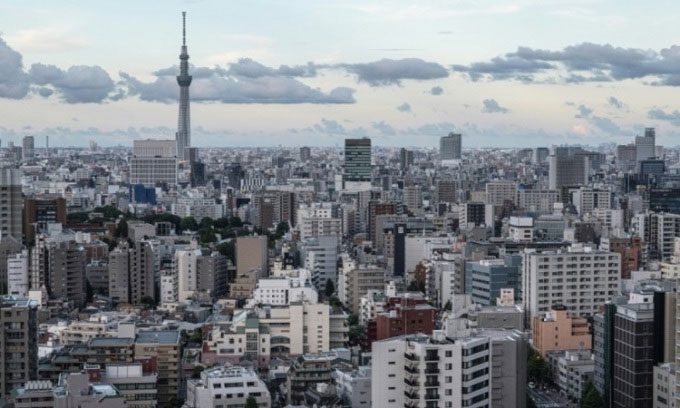The Japanese government has implemented numerous measures to combat earthquakes, including issuing building regulations, renovating old houses, and stockpiling essential supplies to be prepared for natural disasters.
Takashi Hosoda was in a skyscraper in Tokyo when the 9.0 magnitude earthquake struck on March 11, 2011. However, this veteran architect was not overly concerned because modern high-rise buildings in Japan are designed to protect residents. A century after Tokyo was devastated by the Great Kanto Earthquake in 1923, the Japanese capital is unrecognizable compared to the city that was flattened by a 7.9 magnitude quake that killed 105,000 people. The city, mainly composed of low wooden houses that were destroyed again during the U.S. bombings in World War II, has been replaced by a super metropolis, where reinforced concrete reigns, according to AFP.

Japan’s earthquake construction regulations are among the strictest in the world. (Photo: Richard A. Brooks)
The disaster on September 1, 1923 marked the “dawn of seismic design in Japan,” according to Yoshiaki Nakano, an earthquake engineering expert at the National Research Institute for Earth Science and Disaster Resilience (NIED). A year later, Japan enacted earthquake-resistant building regulations. These standards have been regularly expanded since then, based on lessons learned from other major earthquakes across the archipelago, which accounts for about 10% of the world’s earthquakes.
Japan’s earthquake construction regulations are among the strictest in the world. “Essentially, high-rise buildings in Japan require relatively higher durability than anywhere else, highlighting the importance of closely monitoring compliance with the law. The monitoring system checks design and on-site construction is a key factor in ensuring the quality of structures and the performance of buildings during earthquakes,” said Nakano.
The 2011 earthquake triggered a powerful tsunami along the northeastern coastline, but the damage in Tokyo was relatively limited. High-rise buildings swayed for several minutes but did not collapse. The originally reinforced structures were modified with many complex safety measures commonly found in modern skyscrapers. Soft rubber cushions were installed beneath the foundation to isolate them from ground vibrations. Dampers are scattered throughout the floors. Some buildings feature heavy pendulums weighing several hundred tons on top, counterbalancing the movement of the building during an earthquake.
Completed in 2014 and standing at 247 meters, the Toranomon Hills Mori Tower is equipped with such seismic vibration control systems, including 516 oil dampers, each consisting of a thick 1.7-meter-long cylinder. This device will move up and down several times in the event of an earthquake. It then gradually warms up, meaning that the energy from the earthquake has been converted into heat and released, explained Kai Toyama, a technical manager at Mori Building. As a result, the vibrations of the entire building can be controlled.
After the 1995 Kobe earthquake, which claimed over 6,000 lives, the Japanese government also focused on enhancing earthquake-resistant standards for new wooden houses and upgrading older buildings built before 1981. The Great Kanto Earthquake of 1923 served as a “wake-up call” not only for engineers but for citizens as well. Since 1960, Japan has designated September 1 as National Disaster Prevention Day. Every year on that day, countless students, office workers, and civil officials, including the entire government, participate in simulation drills to prepare for a major earthquake.
In Japan, many citizens, businesses, and local governments stockpile essential supplies in warehouses. As of April 1, 2023, local authorities in Tokyo had stored 9.5 million ready-to-eat items (such as instant noodles and biscuits) in 400 warehouses. These precautionary measures were further strengthened after the 2011 earthquake caused severe traffic congestion in Tokyo and disrupted public transportation, preventing millions from returning home, according to Hosoda, who is now the disaster management director at Mori Building.
Despite all these efforts, some experts believe that Tokyo remains vulnerable to earthquakes and flooding. The eastern districts of the capital are built on unstable ground and are prone to flooding, while many old wooden houses are concentrated there. The dense concentration of skyscrapers and residential areas on many artificial islands also increases the risk of being isolated during a disaster. Experts estimate that there is a 70% chance of a major earthquake occurring in Tokyo within the next 30 years.


















































